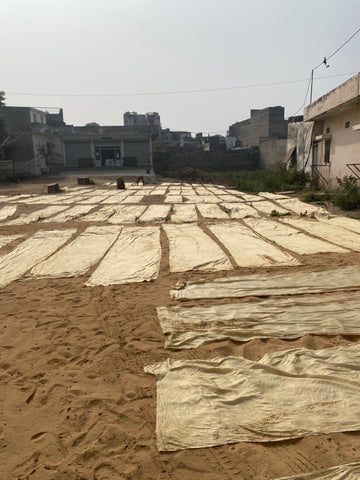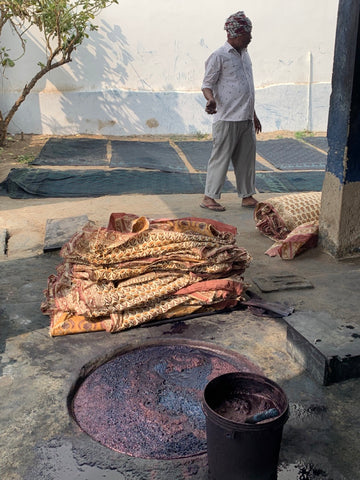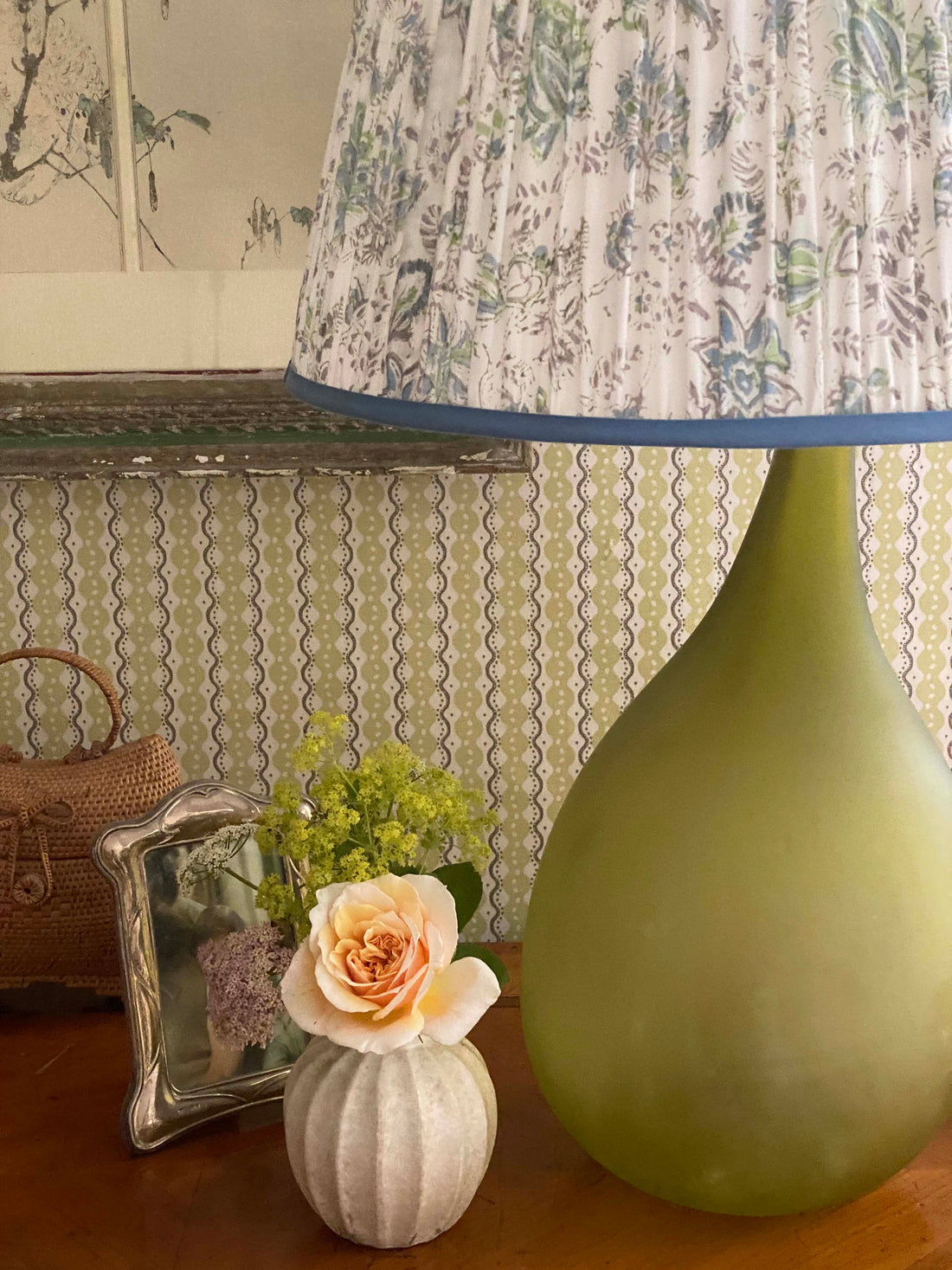We have always loved the art of block printing and the distinctive designs can be found in many of our lampshades - in fact we have a whole Collection named after Bagru, one of the villages outside Jaipur where we source much of our fabric.

The village's location, surrounded by rivers and abundant sources of water, made it an ideal place for textile printing.
The history of block printing in Jaipur can be traced back to the late 16th century when it was introduced by the Chhipa community. The Chhipa artisans, known for their exceptional skills in dyeing and printing, migrated to Jaipur and established their craft in the city. Over the years, the art form evolved, blending local influences with Mughal motifs, resulting in a unique style that is distinctively Jaipur.
The process begins with the creation of wooden blocks, which are hand-carved by highly skilled craftsmen. These blocks are made from sturdy wood, such as teak, and are designed to print specific motifs and patterns.

Some of our block prints come from Sanganer, which lies just south of Jaipur and is home to another group of artisans. The style and technique of hand block printing from Sanganer differs from that from Bagru in several ways.

The typical Sanganeri prints are more floral and delicate than those from Bagru - for example our Rosy Posy and Forget me Not are perfect examples whereas the simpler, geometric style of Bagru can be seen in our 'Brick Collection'.
In Bagru the colour palette is dominated by hues like indigo blue, red, black, and yellow, achieved through the use of natural dyes extracted from plants and minerals.

In Sanganer the printing is characterised by a vibrant and pastel colour palette. The prints often feature shades of pink, blue, green, and yellow, creating a lighter and more playful aesthetic. Natural dyes, including indigo and madder, are also used in Sanganeri prints.
The printing technique in Bagru involves a technique called 'Dabu' or mud-resist printing. This technique involves applying a specially prepared mud paste, made from clay and gum, on the fabric before printing. The mud paste acts as a resist, preventing the dye from penetrating certain areas, resulting in unique patterns. Bagru block printing also incorporates direct block printing without the use of mud resist.

Sanganeri block printing primarily utilises direct block printing techniques. The wooden blocks are dipped in natural dyes and stamped directly onto the fabric to create the desired pattern. The focus is on precise alignment and intricate detailing achieved through multiple impressions of the block by hand which results in the wonderful slight 'imperfections' which add to the final design.
At Samarkand Design we have always celebrated and appreciated handmade and traditional crafts and we continue to work with our partners in Jaipur to create beautiful and innovative designs for our lampshades. Working with these artisans is important in keeping the essence of the art form alive and to help preserve this valuable heritage.
